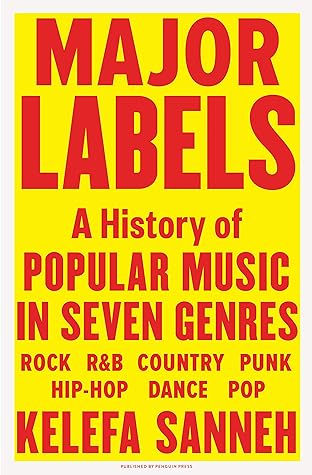More on this book
Community
Kindle Notes & Highlights
Read between
November 16 - November 24, 2021
We put on our headphones and escape from the world into our own curated soundtracks. But at the same time, many fans have kept faith with the idea that music brings people together, assembling audiences that cross boundaries. The truth, of course, is that both of these ideas are important and true. Popular songs or styles or performers can erase boundaries, but they can also erect new ones.
Like Grand Funk Railroad, for a time one of the most popular rock bands in America, even if many critics couldn’t figure out why.
Is it possible that, when we finally have easy access to just about any song we want, many of us end up wanting to listen to the same thing?
A song about anguish is not necessarily any more meaningful than a song about partying, let alone any better.
Agendalessness is what made the hair-metal scene seem contemporary and fun, setting it apart from more earnest, old-fashioned forms of rock ’n’ roll.
He witnessed “a petite blonde of incredible vanilla-ice-cream beauty,” equipped with “a quavering Appalachian soprano.” This singer and her band, he declared, represented “gut-country music at its purest.” Her name was Dolly Parton.
I loved the way the pedal steel could make even the goofiest song sound a little bit wistful.
Nelson had a knack for writing easeful, jazzy-influenced tunes that slipped between genres, including “Crazy,” which had been Patsy Cline’s signature song and which is now so firmly installed in the American songbook that many listeners probably don’t even think of it as a country song.
(People don’t tend to sing about—or fight over—New England or the Midwest, in large part because neither of those regions waged a bloody war of secession against the US government.)
Punk represents the universal human desire to be a little less universal—to separate whatever it is you care about from whatever it is that other people care about.
Hardcore was both an intensification of punk and a rejection of it: a double-negative genre, rebelling against the punk rebellion from within.
Minor Threat’s first record included a forty-six-second-long song called “Straight Edge,”
I worked as a clerk and buyer at a small shop in Harvard Square, where I got a chance to try not to be one of those obnoxious guys behind the record-store counter.
Where the members of Green Day were, in their own self-effacing ways, serious and ambitious musicians, the members of blink-182 cultivated the impression that they were a bunch of idiots.
Punk rock is fundamentally incoherent, an anti-traditional tradition that promises “anarchy,” or a whiff of it, while providing its devotees something tidy and recognizable enough to be considered a musical genre.
You gotta keep it steady, baby / Got to keep it real,”
I didn’t think that literary references or polysyllabic words were necessarily anything to celebrate, or that rhymes about politics and racism were guaranteed to be more memorable, or less hackneyed, than rhymes about killing and fucking.
There was Francis Grasso, who was an anomaly: a straight DJ at a gay club, the Sanctuary, who liked to play the orgasmic interlude from “Whole Lotta Love,” by Led Zeppelin, on top of the drumming section of “I’m a Man,” by Chicago.
“Negermusik”—in
Ever since the sixties, rock ’n’ roll had been the most prestigious form of popular music, beloved both by “rock critics” (the term itself suggested this bias) and by everyday fans, many of whom were inclined to accept the idea that mainstream pop music, no matter how much they loved it, was relatively inconsequential. The new pop revolution encouraged listeners of all sorts to question this hierarchy: to consider the possibility that rock ’n’ roll was boring, and that so-called pop music was the future.


